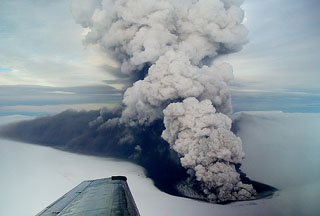Report on Grimsvotn (Iceland) — 15 January-21 January 2025
Smithsonian Institution / US Geological Survey
Weekly Volcanic Activity Report, 15 January-21 January 2025
Managing Editor: Sally Sennert.
Please cite this report as:
Global Volcanism Program, 2025. Report on Grimsvotn (Iceland) (Sennert, S, ed.). Weekly Volcanic Activity Report, 15 January-21 January 2025. Smithsonian Institution and US Geological Survey.
Grimsvotn
Iceland
64.416°N, 17.316°W; summit elev. 1719 m
All times are local (unless otherwise noted)
The Icelandic Meteorological Office (IMO) reported that floodwaters from a jökulhlaup originating from Grímsvötn’s subglacial lake peaked, likely on 15 January, then began to slowly decrease. The jökulhlaup was over by 20 January; both seismicity and water discharge levels in the Gígjukvísl river had returned to normal. The pressure decrease caused by the water volume loss from the subglacial lake did not trigger volcanic unrest. At 0948 on 20 January the Aviation Color Code was lowered back to Green (the lowest level on a four-color scale).
Geological Summary. Grímsvötn, Iceland's most frequently active volcano in recent history, lies largely beneath the vast Vatnajökull icecap. The caldera lake is covered by a 200-m-thick ice shelf, and only the southern rim of the 6 x 8 km caldera is exposed. The geothermal area in the caldera causes frequent jökulhlaups (glacier outburst floods) when melting raises the water level high enough to lift its ice dam. Long NE-SW-trending fissure systems extend from the central volcano. The most prominent of these is the noted Laki (Skaftar) fissure, which extends to the SW and produced the world's largest known historical lava flow in 1783. The 15 km3 basaltic Laki lavas were erupted over 7 months from a 27-km-long fissure system. Extensive crop damage and livestock losses caused a severe famine that resulted in the loss of one-fifth of the population of Iceland.

